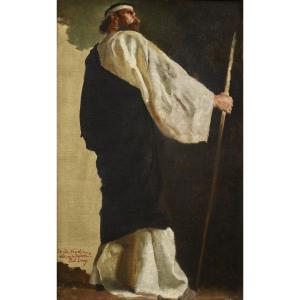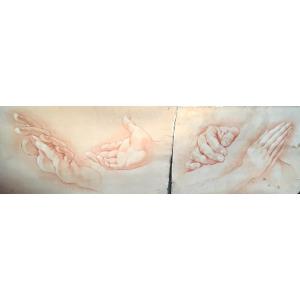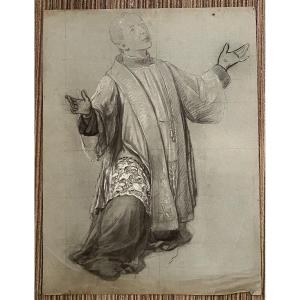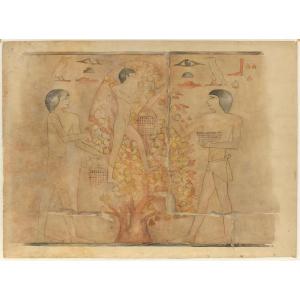73 x 45 cm
Inscription lower left: 'A D. Veréchia study for "Mordochea"
Paul Alexandre Alfred Leroy spent a part of his childhood in Odessa and entered the Fine arts academy of this city in 1837. At the age of 17, back in France, he was admitted at the École des BeauxArts and the Alexandre Cabanel’ studio. Awarded at the Salon in 1882 and 1884, he won a travel scholarship which permitted him to visit Egypt, Algeria, Tunisia … While he already had a great interest in the Orient, these trips enabled him to fill his sketchbooks and enhance his collection of earthenware and oriental clothing. With Baron Arthur Chassériau, Etienne Dinet and a dozen other painters, he was a founding member of the Société des peintres orientalistes français in 1893. He drew the society’s emblem and faithfully took part to its exhibitions until 1933. All these objects and souvenirs gathered in his trips, he transcribed it in genre painting – like the Bisvira’ weaver (1889) from the Musée d’Orsay – or religious painting – such as the Jesus with Martha and Mary(1882) at the Musée des Beaux-Arts in Rouen. The work we are presenting today is a study for Haman and Mordecai, a monumental painting for which he received a medal at the Salon of 1884 and currently kept by the Odessa Museum of Western and Eastern Art. The scene is taken from the Book of Esther, in the Hebrew bible. Mordecai belongs to the fourth generation of Jews exiled from the kingdom of Judah and lives in Persia with his niece Esther he raises as his own daughter. The young woman, entered the harem, becomes the wife of King Ahasuerus. But Mordecai is in conflict with the king's minister, Haman. The Minister cannot stand the attitude of Mordecai, only character of the court who refuses to bow down to him, practice prohibited by Judaism. It is this scene of Mordecai disdain that Paul Leroy chooses to represent. Outraged, Haman publishes a decree providing for the extermination of all Jews in Persia. But Mordecai and his niece manage to influence the king and thwart his plans. This day when Haman is hanged and when fate turns in Jewish people’s favor is still celebrated on the feast of Purim.






























 Le Magazine de PROANTIC
Le Magazine de PROANTIC TRÉSORS Magazine
TRÉSORS Magazine Rivista Artiquariato
Rivista Artiquariato